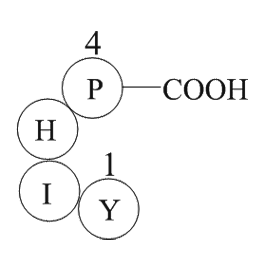Prothrombin (474-477) [Mus musculus]
Prothrombin (coagulation factor II) (H2N-Tyr-Ile-His-Pro-OH) is produced in the liver and is post-translationally modified in a vitamin K-dependent reaction that converts ten glutamic acids on prothrombin into gamma-carboxyglutamic acid (Gla).
Prothrombin is proteolytically cleaved to form thrombin in the coagulation cascade, which ultimately results in the stemming of blood loss. Thrombin in turn acts as a serine protease that converts soluble fibrinogen into insoluble strands of fibrin, as well as catalyzing many other coagulation-related reactions. [1]
Activation of prothrombin is crucial in physiological and pathological coagulation. Various rare diseases involving prothrombin have been described (e.g., hypoprothrombinemia). Anti-prothrombin antibodies in autoimmune disease may be a factor in the formation of the lupus anticoagulant, also known as antiphospholipid syndrome. Hyperprothrombinemia can be caused by the G20210A mutation. Thus, manipulation of prothrombin is central to the mode of action of most anticoagulants.
Ref:
1. Royle NJ, Irwin DM, Koschinsky ML, MacGillivray RT, Hamerton JL (May 1987). "Human genes encoding prothrombin and ceruloplasmin map to 11p11-q12 and 3q21-24, respectively". Somat. Cell Mol. Genet. 13 (3): 285–92.
| Physical Appearance | A solid |
| Storage | Store at -20°C |
| M.Wt | 528.6 |
| Formula | C26H36N6O6 |
| Synonyms | H2N-Tyr-Ile-His-Pro-OH |
| Solubility | insoluble in H2O; ≥19 mg/mL in EtOH; ≥52.9 mg/mL in DMSO |
| SDF | Download SDF |
| Canonical SMILES | OC1=CC=C(C[C@H](N)C(N[C@@H]([C@H](C)CC)C(NC(CC2=CNC=N2)C(N3CCC[C@]3([H])C(O)=O)=O)=O)=O)C=C1 |
| Shipping Condition | Small Molecules with Blue Ice, Modified Nucleotides with Dry Ice. |
| General tips | We do not recommend long-term storage for the solution, please use it up soon. |
Quality Control & MSDS
- View current batch:
Chemical structure
![Coagulation factor II peptide; prothrombin (474-477) [Mus musculus]](/media/diy/images/struct/A1058.png)








